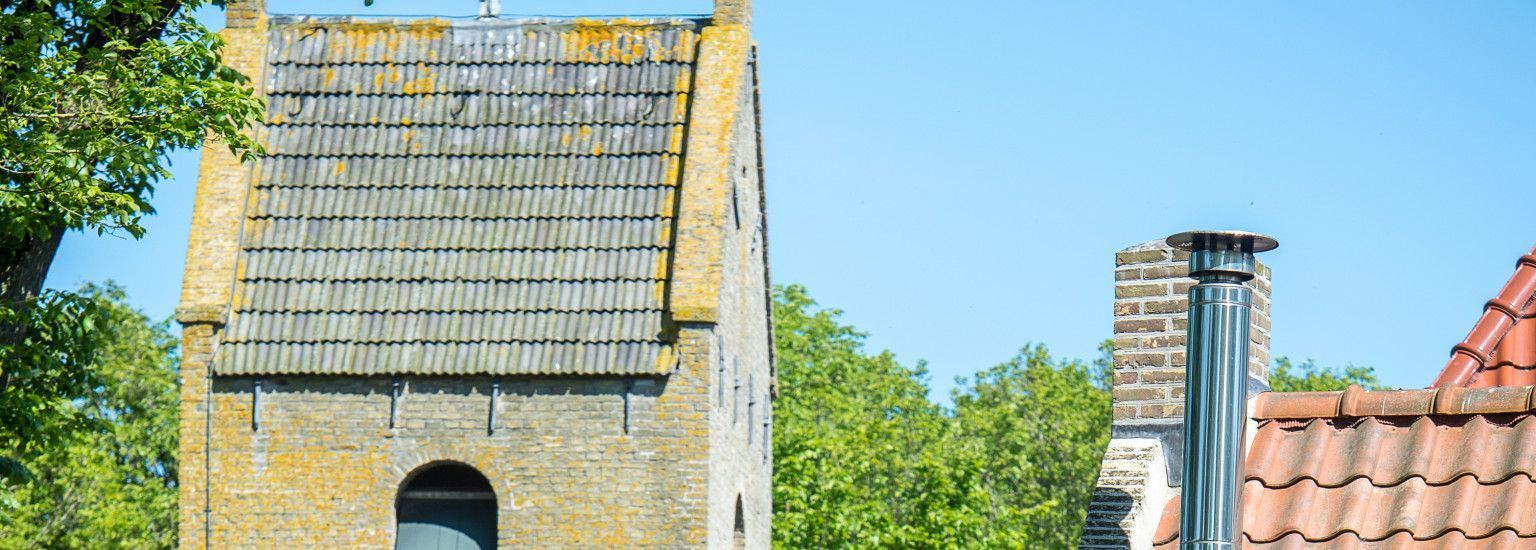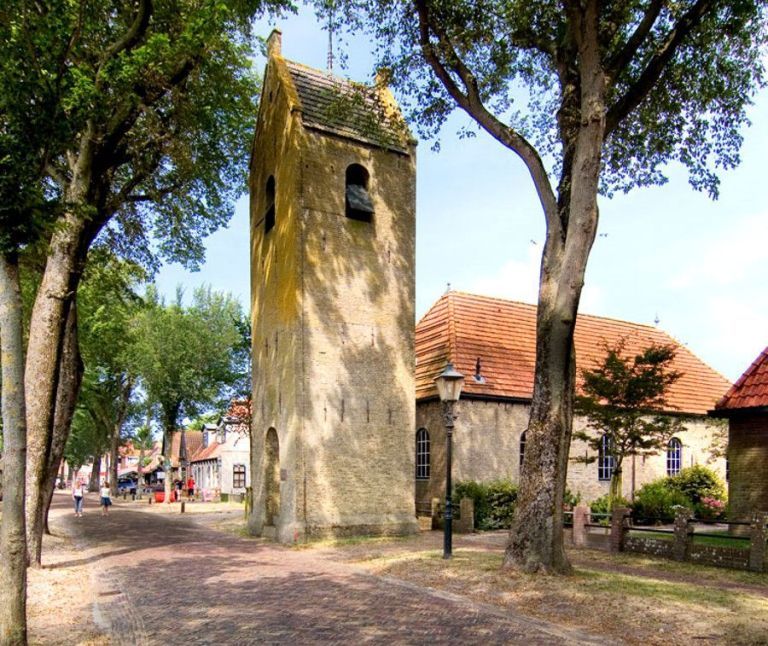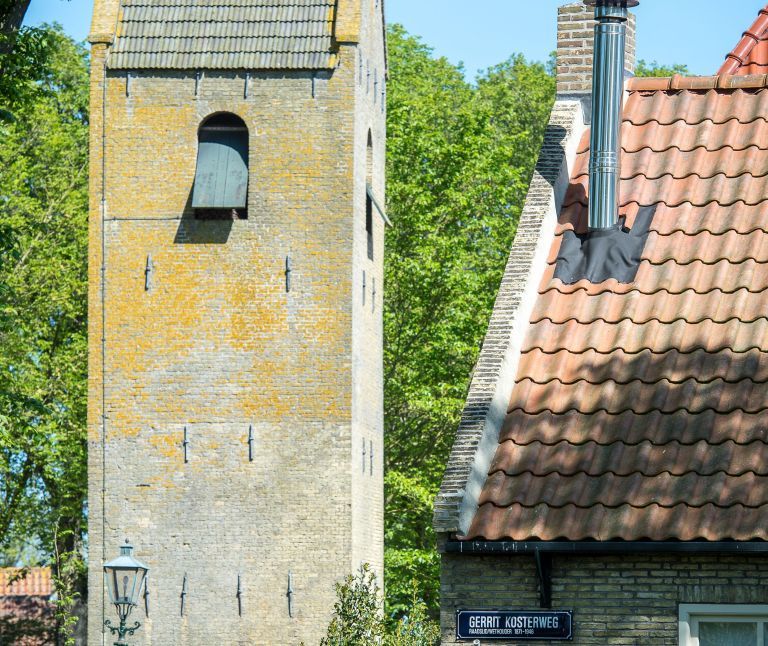
Village Tower Ballum
The village tower of Ballum was built in 1755 as a replacement of the old wooden belfry, which was demolished June 14th 1755. The swinging bell in the village tower served as a means to warn the population of imminent danger but also to tell time. The current bell, weighing 300 kg, was hung by the Germans in 1949, after stealing the old bell dating back to 1784.
In 1870 the Tower height was increased by 2.5 m in order to allow it to also be used as a maritime beacon. This construction was done by Kornelis Mosterman, from Nes, for the sum of 824 Dutch guilders. The tower was used as a way to raise alarm and tell time. Hence, it was not a church tower, the church behind the tower was built at a later date. Above the access door the crest of King William V was carved in white Bremer sand stone. This was stolen during the French period.
The proud structure does give the contemporary village image additional cachet, but in the past horrid scenes unfolded here. At the tower one would find the whipping pole and the pillory. Once every 14 days justice was rendered in the castle. The punishments were executed near the tower. Those who were chained to the pillory were not whipped, but literally put on display with a sign showing their offence. Those who really went too far were banished from the island.
The whipping pole used to contain the following Latin proverb;
Oderunt peccare boni virtutis amore
Oderunt peccare mali formidine poenae.
The Bell
Village towers mainly served as a means to suspend swinging bells with which the population could be warned in case of danger but also to indicate the time. The tower of Ballum was solely built for that purpose. The church behind the tower was built much later, i.e. in 1832, when the small church on the cemetary was demolished. The bell that currently hangs in the tower was added after World War II since the Germans had removed the old bell. The old bell dating back to 1784 most likely showed the crest of the King. This crest was removed during the French period (1810-1813).
On the old bell the following text was also visible: 'Cristiaen en Jan Seest, Amstelodami Anno 1784 me fecit’
The bell currently suspended in the tower has a diameter of 77 cm, weighs 300 kg and was hung in 1949. This bell shows the following text:
VAN BERGEN, CONCORDIAE RES PARVAE CRESCUNT VAN BERGEN M.E.
FECIT ANNO DOMINI MCMXLIX BURGEMEESTER R. WALDA
WETHOUDERS J.E.DE VRIES EN J.J. VAN DER LAAG.
The other side of the bell shows:
19 HEILIGERLEE ‘49
DEEZ TOREN RAAKTE ZONDER ZIEL TOEN T’DUITS GEWELD HEM OVERVIEL (this tower lost its soul to the German violence)
MAAR WEET ALS IK MIJN STEM LAAT HOREN (but know that if my voice is heard)
UIT NOESTE VLIJT WERD IK GEBOREN. (my birth is the result of hard work)
Above the brick archway above the access door the crest of Prince William was visible, carved in white Bremer sand stone. This stone was made by the stonemason Jan Oosthout from The Hague. The crest on this stone was removed during the French period. In the archway above the door is a stone with the text:
VOLMAGT IAN TIALLES EN KLAAS BROERS
BURGEMEESTER IAN PYTTERS 1755.




